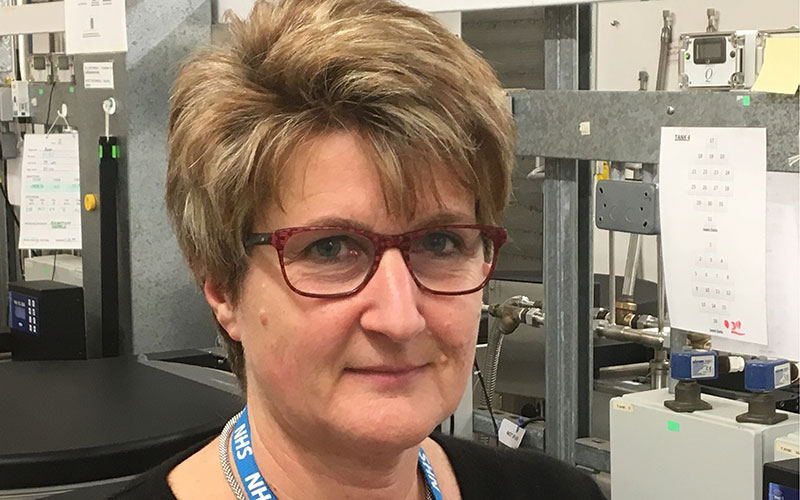This month we ask “How does a laboratory quality management system benefit patients?”

 Shauna McAuley
Shauna McAuley

Governance and Quality Manager
Belfast Trust Laboratories
The essence of a laboratory Quality Management System (QMS) is providing the best service to our patients and service users. Every element is about assuring our patients, our employers and ourselves that we are providing a quality service – and we can prove it.
Each element drives towards ensuring that the results and products we release are as accurate and timely as we can make them. Quality management has been born out of a requirement to ensure products and services are safe for users, despite an increasing demand and limited resources. It allows us to provide a controlled, evidence-based method of assessing our performance and identifying any areas that would benefit from improvement.
The audit and incident management process helps us to identify any potential, or minor, issues in our processes promptly, allowing us to address their cause(s) and ultimately reduce the possibility of patient impacting events happening. This ensures we are continually improving the service for our service users, ensuring patient safety.
Good document control ensures that an updated, accurate, approved procedure is available at the point of use.
Our laboratory quality management system ensures we have the right staff, doing the right thing at the right time producing the right results, for the right patient at the right time. Right?
 Janet Wells
Janet Wells

Head of Department – Stem Cell Transplant Laboratory
The Royal Marsden NHS Foundation Trust
The stem cell lab at the Royal Marsden Hospital provides testing, processing, storage and release of stem cells that must be capable of repopulating the patient’s bone marrow following high dose chemotherapy or radiotherapy treatments for malignancy.
Our patients must be able to trust that the laboratory staff will follow approved processes and procedures and that the cells they receive will provide them with the best chance of recovery. Our laboratory QMS not only helps us to meet the strict regulatory requirements that govern this area of medicine, but importantly, also provides reassurance to patients and their families as they go through their treatment.
For lab staff, the processing of irreplaceable cells can be quite stressful. The laboratory QMS assists in reducing the risk of errors and increases consistency, which in turn, ensures that all patients receive products of consistent quality. Cells may travel to us from around the world from volunteer donors or from other transplant centres whose quality management systems we, and the patients, rely on to provide us with suitable products.
Our QMS allows us to constantly improve our practice by making evidence-based changes through continual audit, which involves every member of the lab staff. This encourages staff to constantly question and challenge existing procedures and puts quality at the heart of our practice.
 Neil Bilbe
Neil Bilbe

Operations Manager and Support Scientist
UK NEQAS for Immunocytochemistry and In-Situ Hybridisation
A QMS comprises a series of interwoven processes, all with a common aim: meeting customer requirements and satisfaction. In the laboratory, customer translates as the patient.
Documentation ensures processes are performed to agreed protocols, standards, and approved reference ranges; that are reproduceable and followed unerringly.
The handling of a sample should follow a documented pathway; ensuring that the result/diagnosis is correct, accurate and there is an accessible audit trail.
Monitoring and maintenance of essential equipment, training of all staff and membership of quality assessment schemes – all contribute.
The laboratory’s infrastructure, hardware, IT, personnel, and quality are subjected to regular and rigorous checks and scrutiny, to ensure precision and patient safety.
All processes are regularly audited, adverse findings or errors are fully investigated and steps are put in place to prevent repeat incidences. This minimises risk, eliminates bad practice, and provides a vehicle for quality improvement.
People, processes, protocols, performance, precision, patients.
This benefits the patient by providing timely, true, verified and finalised results – correct result to the correct patient.
A QMS doesn’t benefit anyone, least of all patients, unless properly implemented, overseen and maintained and adverse outcomes are acted upon within a culture of continual improvement.
